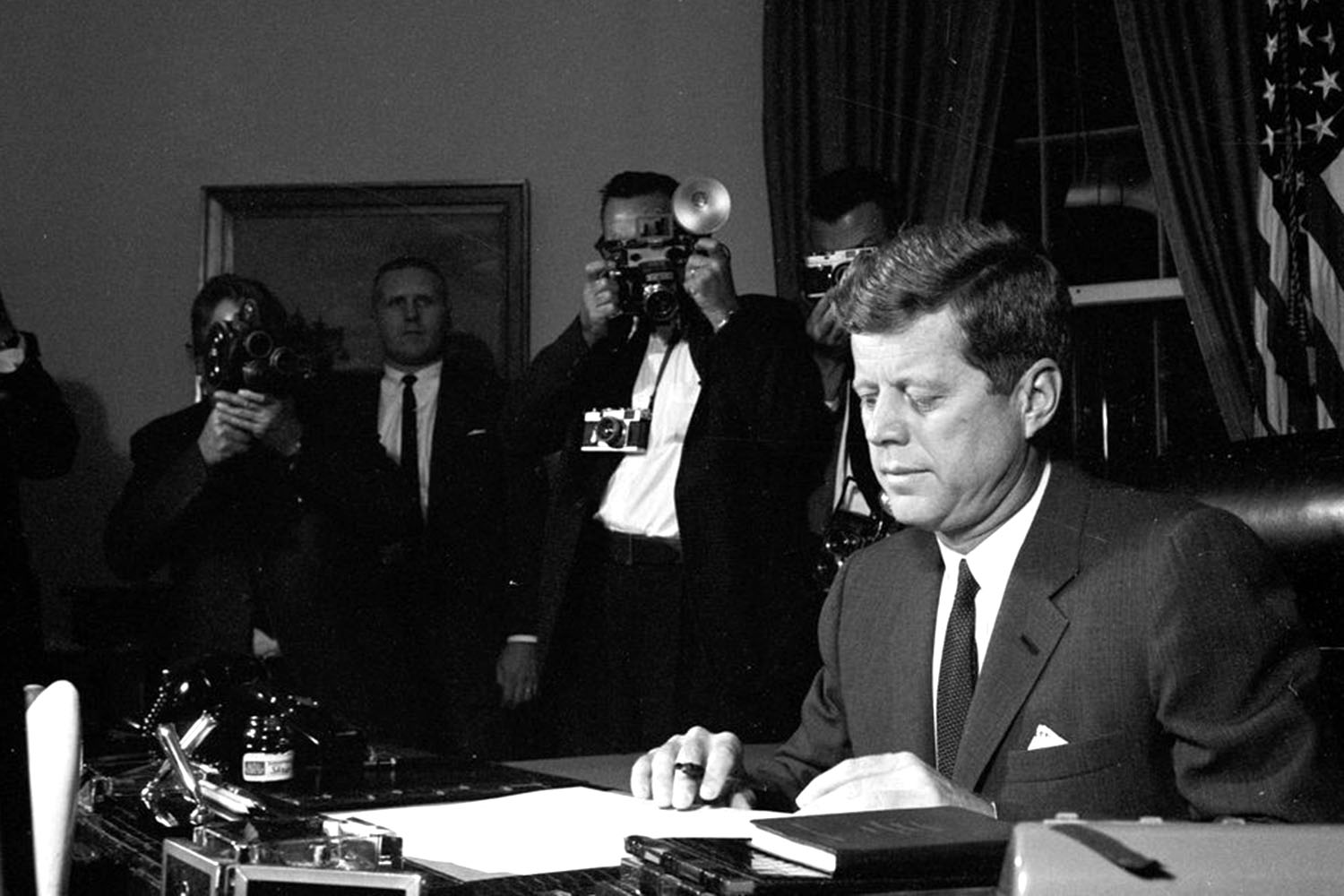
World on the brink
President John F. Kennedy and Soviet Premier Nikita Khrushchev went head to head October 1962, fifty – six years ago.
This face off is referred to as the Cuban Missile Crisis by historians and believed to be closest the world has ever been to a nuclear war.
The CIA, using photographs taken by a U2 spy plane, detected a missile site with Russian medium-range missiles in San Cristobal, Cuba on October 15.
These photos arrived on Kennedy’s desk the next morning; his response was to convene EXCOMM, a group of government officials, to assess the situation.
A day after their first meeting, more photos were produced, showing evidence of missiles that had a range of 2,200 miles on the island, capable of striking many major population centers throughout the Americas.
The group could not agree on any one response to this threat; however, we know now, thanks to documents made public by the JFK Library, that they were considering both an invasion and blockade of Cuba.
President Kennedy gave an address to the nation, perhaps the most frightening speech an American President has ever had to give, on October 22.
Kennedy informed Americans of the missile sites and announced the beginning of a quarantine of the island of Cuba.
EXCOMM had recommended the action two days before, careful to call it a quarantine instead of a blockade because a blockade would be considered an act of war.
On October 23, the Soviet government ordered all Soviet ships headed to Cuba be stopped, yet they still refused to remove the missiles.
Because his communications with Khrushchev seemed futile, Kennedy ordered that flights over Cuba to monitor the sites be increased from once to twice a day.
The U.S. began once again talking about a possible invasion to take control over of the missiles, an action that would more likely than not result in a war.
As this was being discussed, an American pilot flying on a mission to Alaska accidentally got lost and ended up in Soviet airspace.
Further escalation of the situation was averted when an American jet guided the pilot into U.S. airspace before the Soviets could shoot him down.
However, one plane was shot down: a U2 spy plane piloted by American Rudolf Anderson after it entered Cuban airspace.
Kennedy correctly reasoned that Khrushchev had not authorized the plane be shot down, and insisted on sticking with diplomacy.
Khrushchev later indicated, after his continuous refusals, that he would remove the missiles from Cuba if Kennedy agreed not to invade.
This, however, was not all that was in the final arrangement, where Kennedy agreed to secretly remove U.S. missiles from Turkey.
Khrushchev announced over Radio Moscow on October 28 that he had agreed to the arrangement with Kennedy, ending a crisis that lasted for thirteen days.
The Cold War would not end until the dissolution of the Soviet Union in 1991, but we were never closer to destruction of life as we know it than we were in October of 1962.
